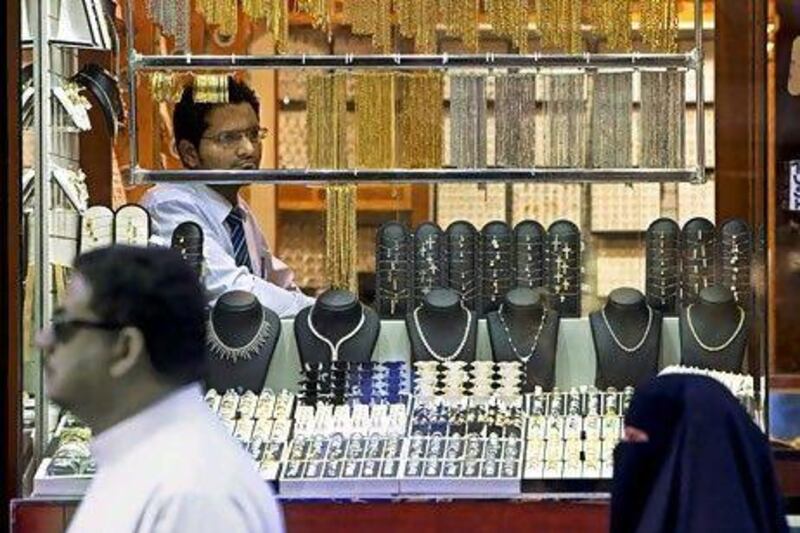Gold jewellery has lost some of its lustre across the Middle East as sales slump in the second quarter amid record high prices and regional unrest.
Demand dropped 1 per cent in the UAE and as much as 16 per cent in Saudi Arabia, according to a World Gold Council (WGC) report.
However, regional appetite for the precious metal in the form of bars and coins for investment purposes rose by 11 per cent during the period, although that segment accounts for a much smaller proportion of overall sales.
Globally, overall demand for gold in all forms slumped 17 per cent, driven by ebbing investment demand, said the report released yesterday.
But the WGC expects demand to rise across the year as Asian buyers add to holdings, and as interest in the metal as a haven is stoked by continuing worries about US and euro-zone sovereign debt. "Ongoing macroeconomic uncertainty, the continued sovereign debt crisis and widespread inflationary pressures will result in gold demand remaining strong," said Marcus Grubb, the managing director of investment at the WGC, which is funded by the gold mining industry.
Gold prices edged to a record US$1,826 an ounce yesterday as the commodity's safe haven status continued to be enhanced by uncertainty in other financial markets.
Measuring all gold sales on a quarterly basis, WGC assesses demand for the precious metal for jewellery, investment and for use in technology devices.
In the Middle East jewellery segment during the second quarter, the largest decline was in Saudi Arabia. Demand of 21 tonnes was 16 per cent below the same period last year, WGC said in its report. The brunt of the decrease was in 21-carat gold, with buyers shifting to lower carat items.
The UAE was the most resilient of the regional markets, with 16.1 tonnes of jewellery purchased, only 1 per cent below the same period last year. Sales were underpinned by appetite from expatriates from the Indian subcontinent, evidenced by the relative strength of the 22-carat jewellery segment, WGC said. Demand from the other Gulf countries fell 4 per cent to 4.9 tonnes.
Jewellery demand in Egypt dropped 8 per cent to 8.3 tonnes.
Rising gold prices and the fallout from the Arab Spring discouraged gold jewellery purchases in the Middle East, the report said. Parts of the region have been hit by unrest this year, deterring tourists and hurting the spending power of citizens.
"A fall in tourist numbers will always impact gold jewellery sales," said Jeffrey Rhodes, the chief executive of INTL Commodities in Dubai.
In contrast, stronger demand was recorded in the regional investment segment, which comprises demand for bars and coins and exchange-traded funds (ETFs), which allow investors to buy gold bullion in the same way they would shares. Regional demand was 6.8 tonnes, equivalent to about $327 million (Dh1.2 billion), up 11 per cent from the same period last year.
Growth in Saudi Arabia was 26 per cent, with a smaller increase of 6 per cent in the UAE and 17 per cent in other Gulf states. In Egypt, demand slipped by 28 per cent to 0.4 tonnes.
Globally, in the overall gold market the WGC said signs of strength in the second quarter remained concentrated in India and China. Purchases of coins, bars, jewellery and gold-backed funds all declined in Europe and the US.
Gold demand dropped 17 per cent in the three months from April to June to 919.8 tonnes from the same period last year.
Interest in gold-backed ETFs fell steeply, down 82 per cent to 51.7 tonnes from last year's high levels. There were signs that this trend was reversing, Mr Grubb said.
"We are bound to get a strong investment number in the third quarter because of the euro-zone sovereign problems," he was quoted by Reuters as saying. "We know ETFs hit a new all-time high in tonnage terms in July and August, and in terms of jewellery demand, there doesn't seem to have been a lot of slackening from the strong turnout in the second quarter."





